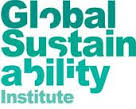Country Resource Maps (Global Sustainability Institute)
Global Sustainability Institute, Anglia Ruskin University / May 2014
 Using data from several sources these maps illustrate important trends in the availability of freshwater, food, oil, coal and natural gas. There are also maps showing the countries with the highest debt (government and private) and levels of income inequality. The maps are useful to examine the cases of individual countries within the global context.
Using data from several sources these maps illustrate important trends in the availability of freshwater, food, oil, coal and natural gas. There are also maps showing the countries with the highest debt (government and private) and levels of income inequality. The maps are useful to examine the cases of individual countries within the global context.
The data used and its accuracy are discussed after each map. There are gaps in some of the data, this is particularly the case for countries in Africa.
Highlights
- Freshwater: Concentration of low water availability countries in the Middle East, Egypt and Pakistan.
- Food: Concentration of food dependency in Africa, the Arabian peninsula, and around the Caribbean, as well as in Japan.
- Oil: Much of the discussion about ‘Peak Oil’ overlooks the fact that oil is unevenly distributed globally. Some countries have no oil reserves of their own, or very little (e.g. Japan), and are entirely dependent on the world market and market prices. Other countries, such as Iraq, Saudi Arabia and Venezuela, have more than 300 years of oil left at their 2010 rates of internal consumption. Kuwait has more than 700 “years left”.
- Coal: Abundance of coal in key emerging markets such as Russia, India, China, Latin America and Africa. In addition the US, Canada and Australia have significant coal reserves.
- Central government debt: Overall levels of debt to GDP have risen, largely driven by the 2008 financial crisis, which led to additional government expenditure to support the financial system, in many cases government fiscal stimulus, and the shrinking of GDP for some countries.
- Private debt: Higher levels of debt are generally concentrated in countries with higher GDP per head, mainly in North America, Europe, Japan, and Australia.
- Under 5 mortality: Rates have been falling in most parts of the world, reflecting improving standards of water supply, sanitation, medical care, housing conditions, and literacy. Geographically, rates correlate with levels of GDP per head, with some exceptions where relatively poor countries have relatively good provision of medical care (e.g. Cuba).
- Income inequality: High degree of income inequality in most of Latin America and parts of Africa. China’s income inequality has increased over the last decade while the Scandinavian countries remain amongst the most equal.
Read report
Global Sustainability Institute’s work on Global Resources and Risk
————————————
This summary was prepared by Why Green Economy?. The views expressed have been paraphrased. See the original source for more information.

Leave a Reply